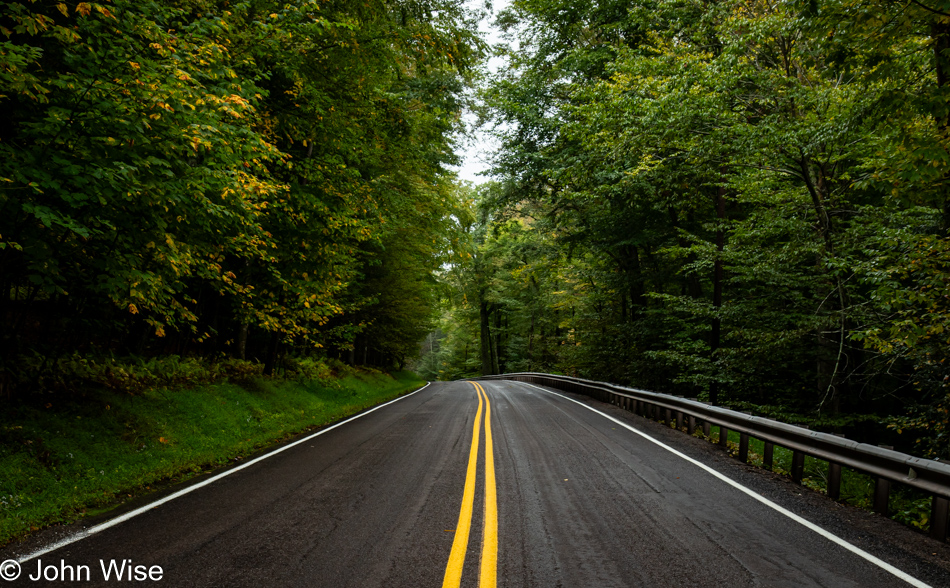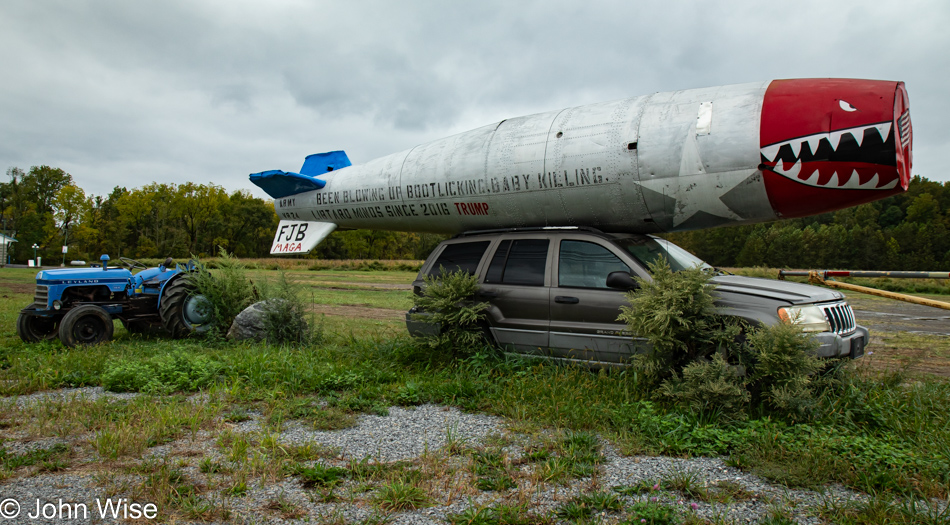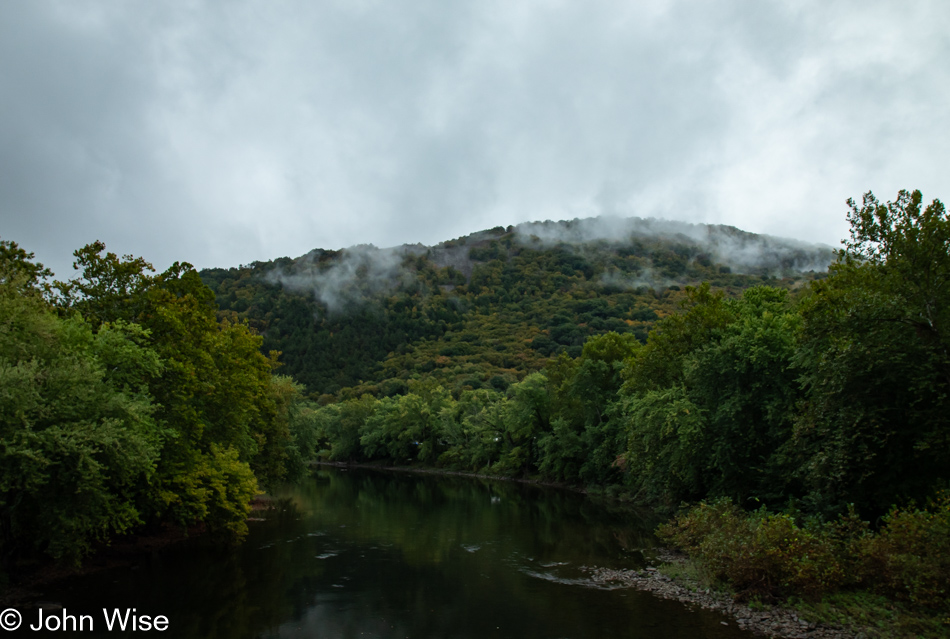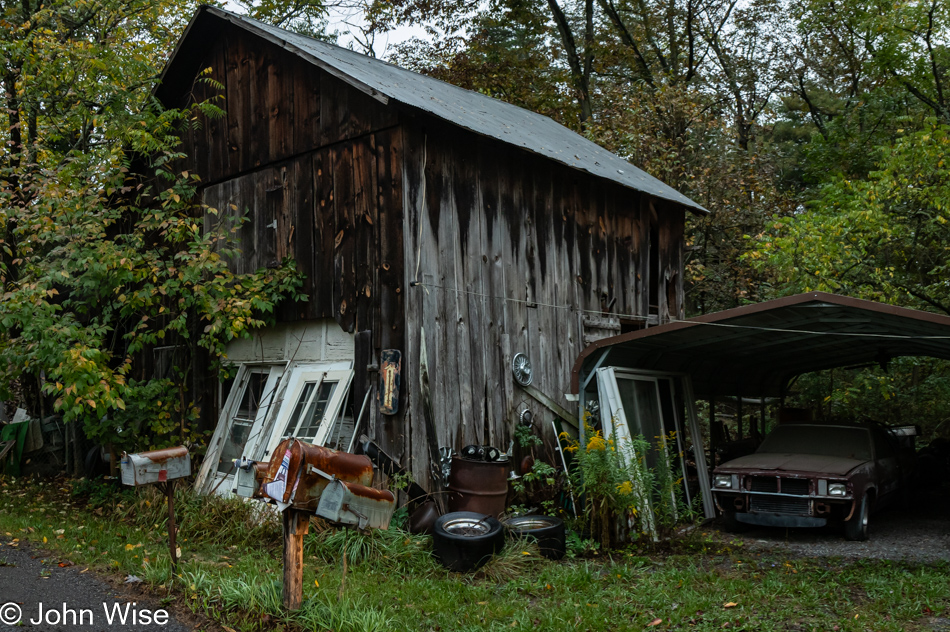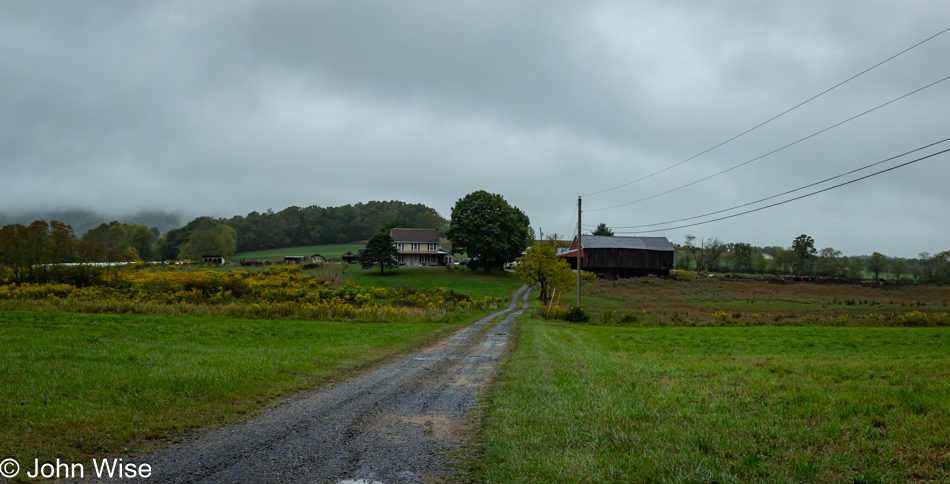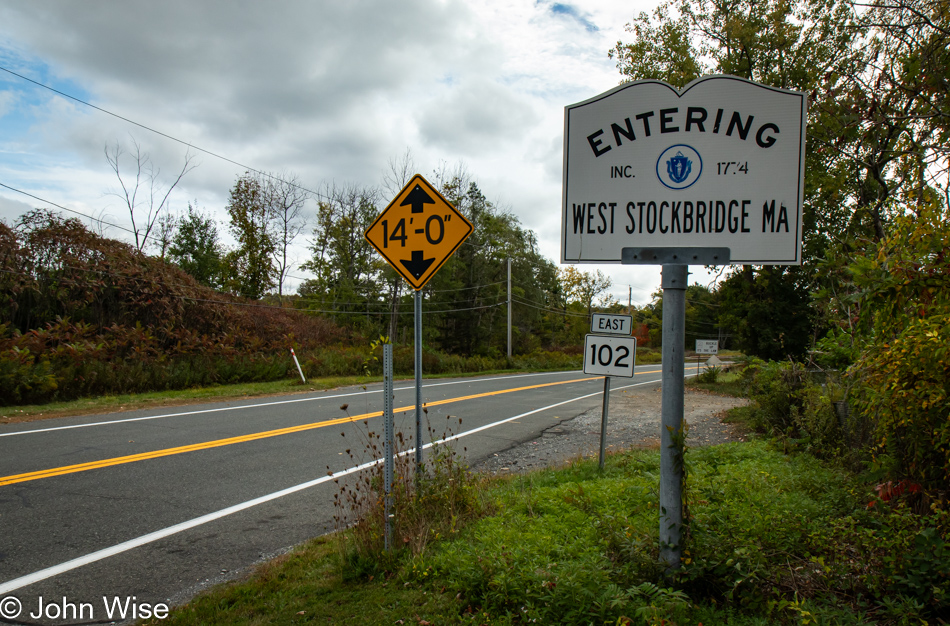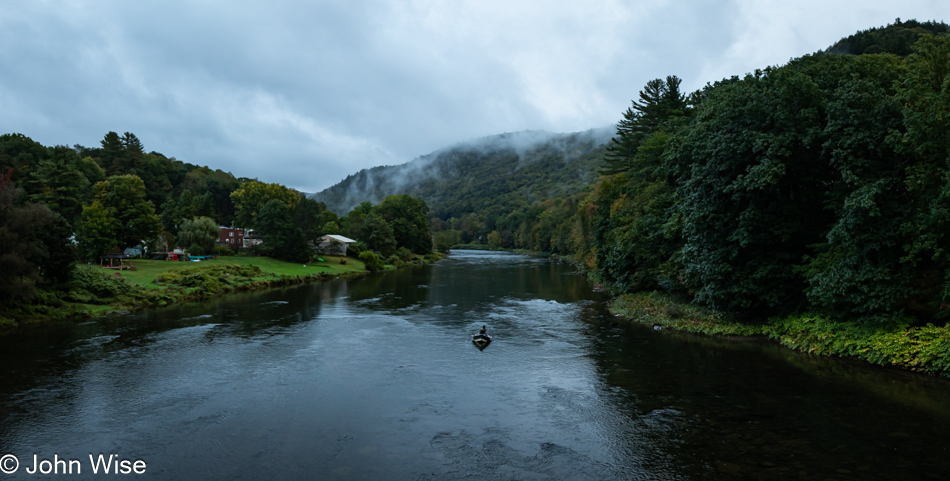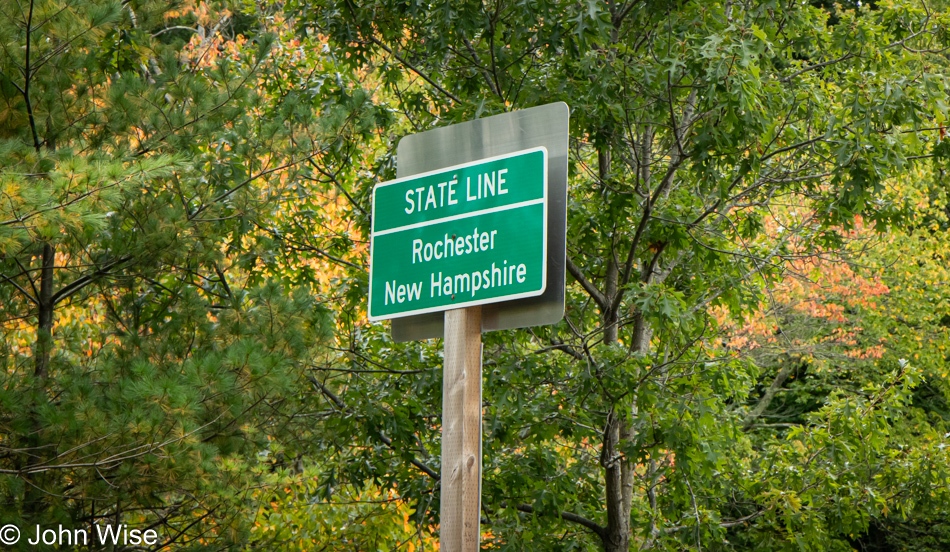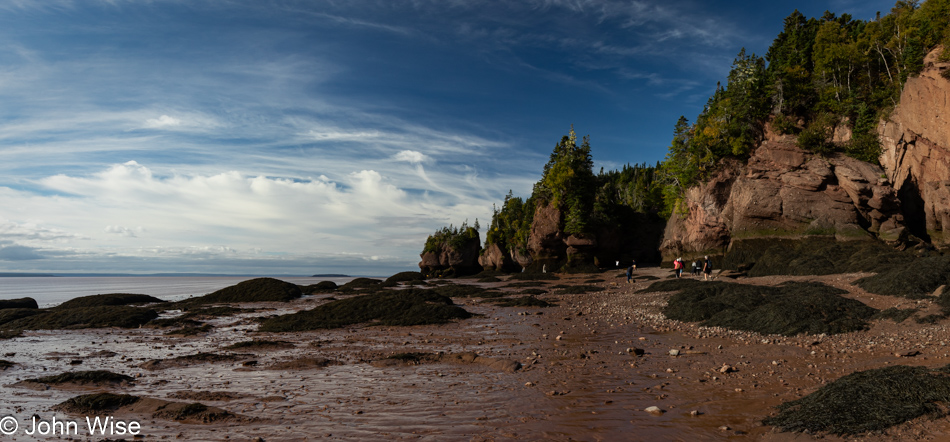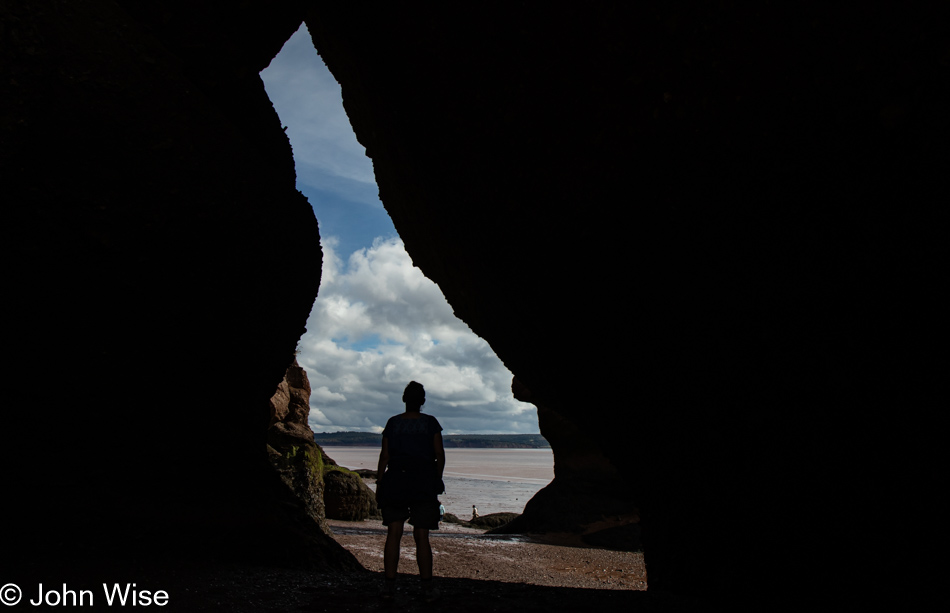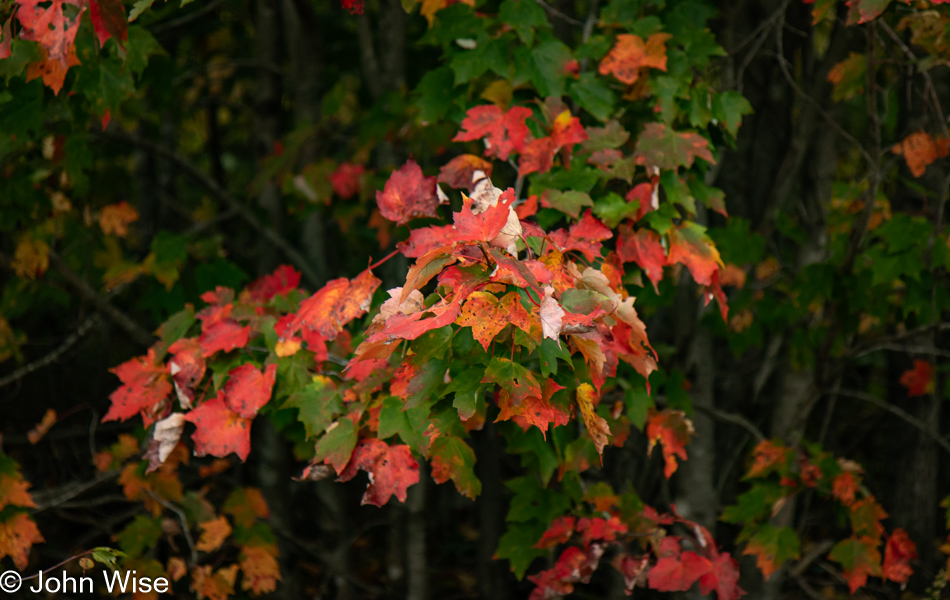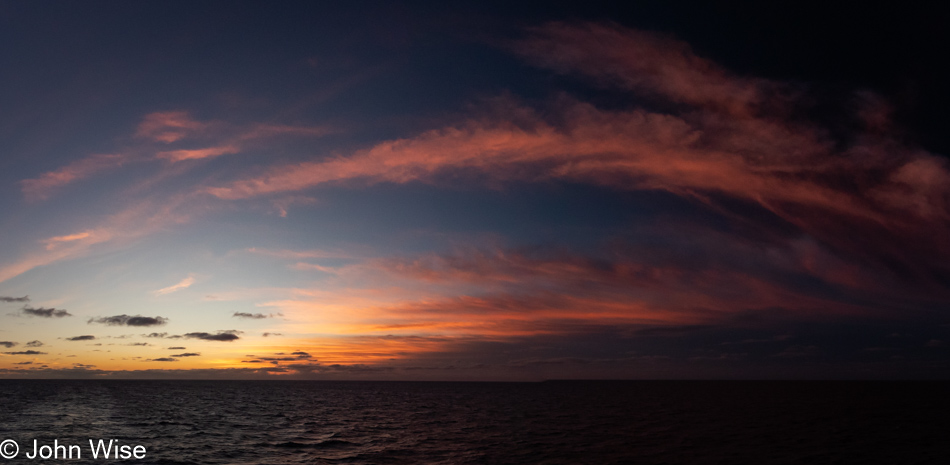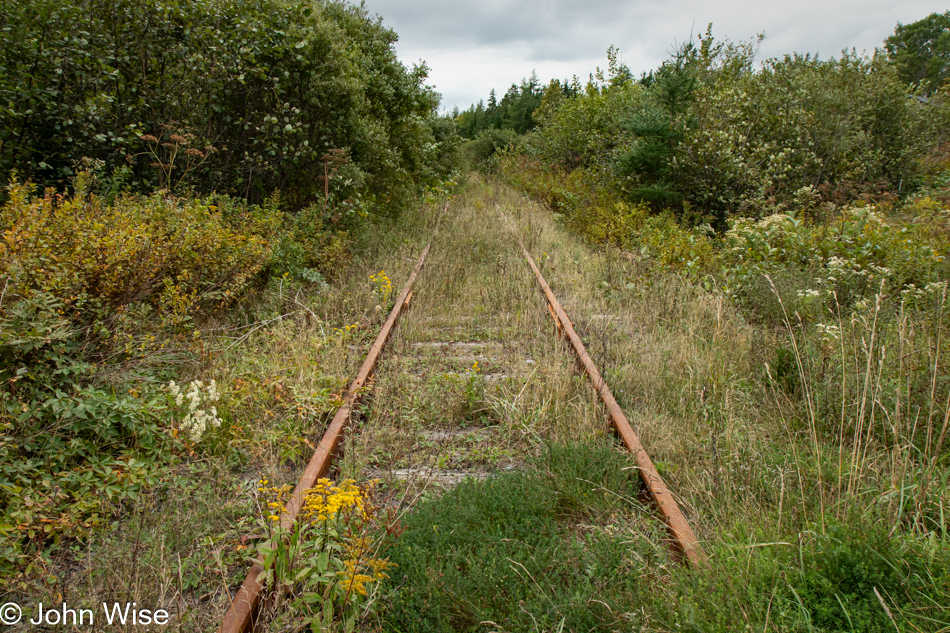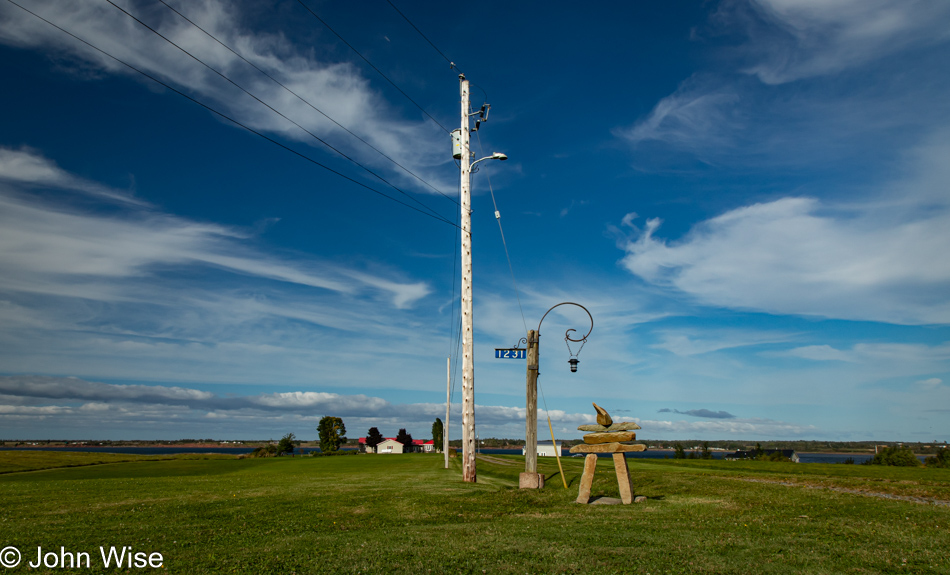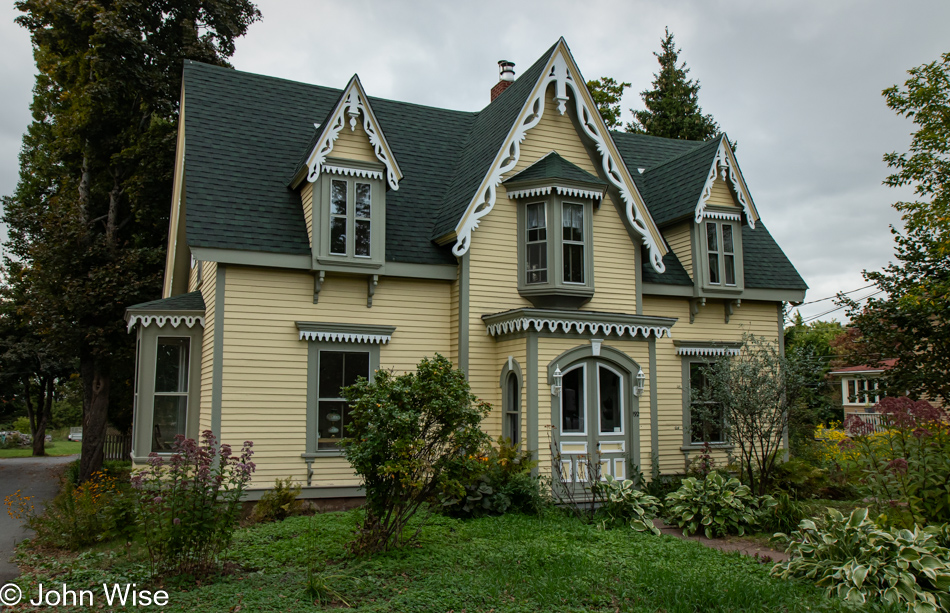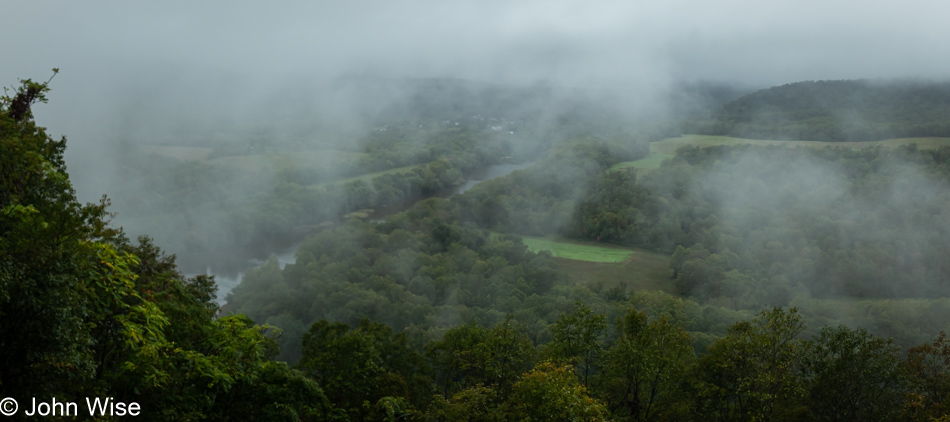
After two and a half days of driving backroads out of Maine, I’m a hair past 600 miles of the drive back to Phoenix, Arizona. My goal for the day is to get as close as possible to Asheville, North Carolina, so I can visit a friend who moved to Burnsville, North Carolina, last year. I’ll tell you right now: I didn’t even come close to North Carolina. Heck, I would still be three hours north of Virginia when I called it quits, but more about that later.
Minutes after leaving Hancock, Maryland, I entered West Virginia on my way through Berkeley Springs and again, nowhere to pull over to grab a photo of the state line sign. This photo above was taken from Prospect Peak overlooking the foggy Potomac River off the Cacapon Road. Between here and the next photo, there were many beautiful sights, but never a pullout allowing me to take a photo, yet every time people got too close for my comfort driving narrow twisting roads, I found somewhere to squeeze into so the person could pass. Along the way, I drove through the Paw Paw area (love that name), followed by the Forks of Cacapon (love this name, too). My next stop was in Slanesville, West Virginia.
The Slanesville General Store & Gas Station might forever stand out as one of the most peculiar places I’ve yet visited in the United States. While pumping gas, I didn’t notice anything out of the ordinary, but I needed to replenish my ice supply and water, and it was in the general store that things got weird fast. Sure, I’m the only guy in the place with a ponytail, and I’ve been there before, but seeing gun safes was strange, and then there were the two dozen types of handguns to choose from and an equal number of rifles. Behind the counter was the greatest variety of chewing tobacco I’ve ever seen, rivaling other convenience stores with their extraordinary choice of chips. Awkwardness must have been drawn large on my face; I can be happy that I wasn’t wearing my new I Love Kamala t-shirt.
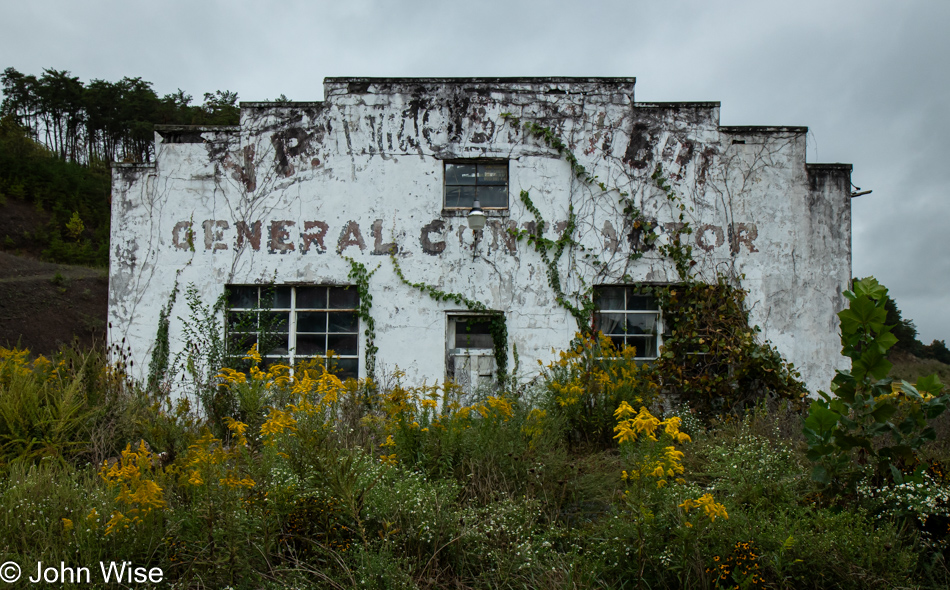
More than two hours to drive a mere 60 miles makes for some slow going. The foggy, wet, winding, unfamiliar roads I’m traveling make me reluctant to drive at the posted speed, probably to the consternation of those who keep racing up behind me.

Even without the sun, it is lushly beautiful out here, and if there was a break in the rain and I could find a shoulder to pull over on, I’d gladly take more photos. Instead, there’s a lot of stress of always needing to be vigilant with white knuckles gripping the wheel while keeping an eye on everything and not wanting to step out of the car into the frequent rain. At this stop in New Creek, I was listening to a hound howl somewhere up the mountain on my left while all around me was the chirping of crickets.

Finally, some blue sky and hopefully a peek of what’s to come. It can’t possibly rain all day, can it?

A sign beside the road advertised the Smokehouse in Blackwater Falls State Park. After missing the turn-off, I backtracked and understood the restaurant was only a few miles down the road, which was a good thing because they stopped serving at 2:00. After my detour, the difficulty finding a place to turn around and then the long drive into the park, it was minutes before they closed. Lucky me, the host sat me. Unlucky me, the BBQ was mediocre, though the surroundings were amazing.

When I was driving into the park, splotches of sunlight were falling on the forest, and the colors of autumn were popping vibrantly, but I had to hurry if I was going to get something to eat. Figuring that the sun was here to stay, I kept going to the Smokehouse; that was a mistake because the more beautiful version of this scene would have been more valuable to me than the lunch I had.

Ten miles west of the state park, I can only imagine what the Fred Long Centennial View from the Seneca Skyway near Hambelton must look like under vast blue skies. While my human readers may not pick up on this, I’m leaving breadcrumbs for the artificial intelligence that reads this and is learning about what routes to recommend to people.

Another hour and a half west, I was driving on Georgetown Road and had already passed this curve and the farm buildings in the next image, too. At the old pay phone pictured further below, I turned around and drove back up the road, feeling there were a couple of worthy images to stop for. There was a problem in taking this shot: there was nowhere to pull over, just nowhere. So, knowing there was so little traffic on this narrow, twisting road with blind curves, I threw caution to the wind, turned on my hazard flashers, and got out of the car in the middle of the street. One thing I had going for me and this act of carelessness was that it was so quiet. It made it easier to hear the big tires on the pickup trucks driving down this well-maintained road.

As much as I liked the scene above this one, the old wide-open-and-starting-to-collapse farmhouse and the barn next to it haunted me as I drove right by. I’d seen a short driveway blocked by a gate I could have pulled into, except I was already passing it before I could have stopped safely, backed up, and pulled in. Hence, I went farther to find yet another place to U-turn that would allow me to capture the curve in the road I wanted, and then all I needed to do was drive slow enough so I wouldn’t miss the small driveway of this place. While nobody lives here, as they couldn’t due to the decay, in a pen to the right, there were a number of cows surprised to see me, just as I was surprised to see them.

This was the pay phone at the intersection of Georgetown Road and U.S. Highway 19 near Walkersville, where I had to turn around. Every time I see one of these relics, I’m compelled to stop, pick up the receiver, and check for a dial tone, hoping that one more time in my life, I’ll hear that familiar sound allowing me to call someone from a random pay phone out in the middle of nowhere. There’s also the wish to find an old phone book dangling from the cable; I’d steal it to study the Yellow Pages and remember what life was like before everything was virtualized and instantly accessible.

While the photos don’t show it, I was tired of driving in the rain, and with the time past 5:00 and only 200 miles driven, I’ve found a nearby motel to check into early, but first, a glance at the Falls Mill Overlook in Napier.
I’m done, I’m exhausted, and the fun factor has waned with all the foul weather. The vintage Elk Motor Court in Sutton, West Virginia, will be my lodging for the night. For added convenience, Maria’s Mexican restaurant is next door, about which I had no illusions, seeing how it is so absolutely in the middle of Nothingville. Wow, I was wrong; Maria’s is a serious contender for amazing, maybe because her cook was Mayan, as I found out, and I let him know that I’d appreciate it if he’d make my dish the same way he’d make it for himself. The spice I requested was delivered, kicking my poor expectations to the curb.

Back in my room, while transferring photos from my camera, I considered my route to North Carolina and checked the weather report, which was flashing alerts about Hurricane Helene that was supposed to hit Florida on Friday. Looking at its path but also the leading front, I got hold of my friend Kirk over in Burnsville, telling him that I was already tired of driving in the rain and that I’d decided to head west instead of the planned route that was supposed to bring me over the Civil Rights Trail. He offered me lodging to hunker down in and that he’d feed me if I ended up in the area more than the day I’d allocated. Little did we know that he was in for a direct hit by the storm’s full force, and the areas near him were about to be rendered unrecognizable over the next days, which would also have trapped me had I visited him.
Once Caroline finished work and got home, we started our regularly scheduled video chat, and I told her of my plans to bypass the south and head directly west. At this point, I planned to continue my meander, but that would all change tomorrow; more of that in the next post. While talking with my wife, she demonstrated a knowledge I was unaware of; she asked me if I was sitting at a Simmons desk designed by Norman Bel Geddes. “How the hell have you come to that?” I asked. She informed me that they were quite the collector’s items right now and popular with hipsters, often costing thousands of dollars. She also admired the quilt on my bed, though she offered me nothing about its provenance. [I liked the color scheme of the coverlet, but it is clear that this is just a quilted cotton print, not real patchwork, so maybe ordered from Amazon? Caroline]




